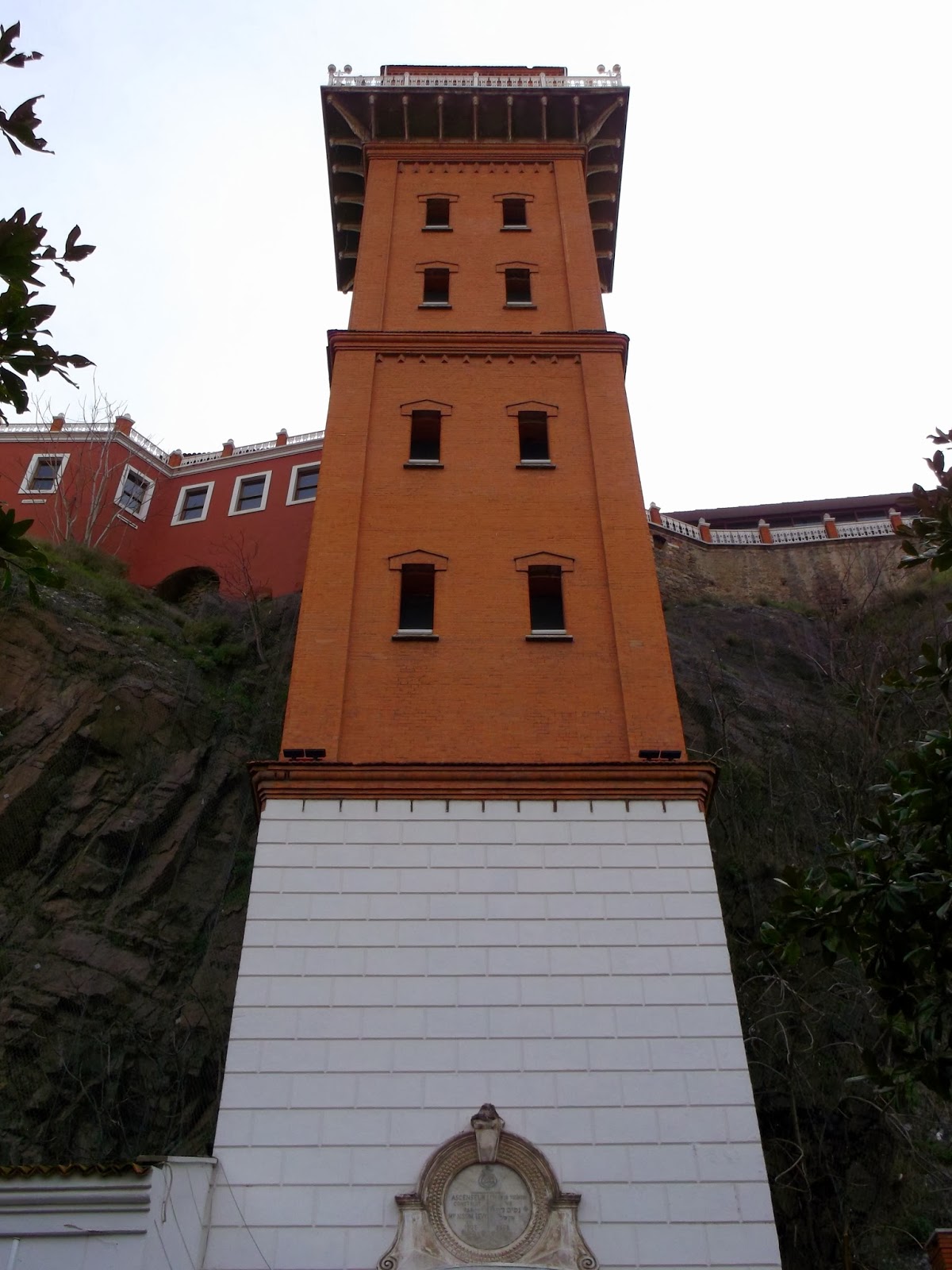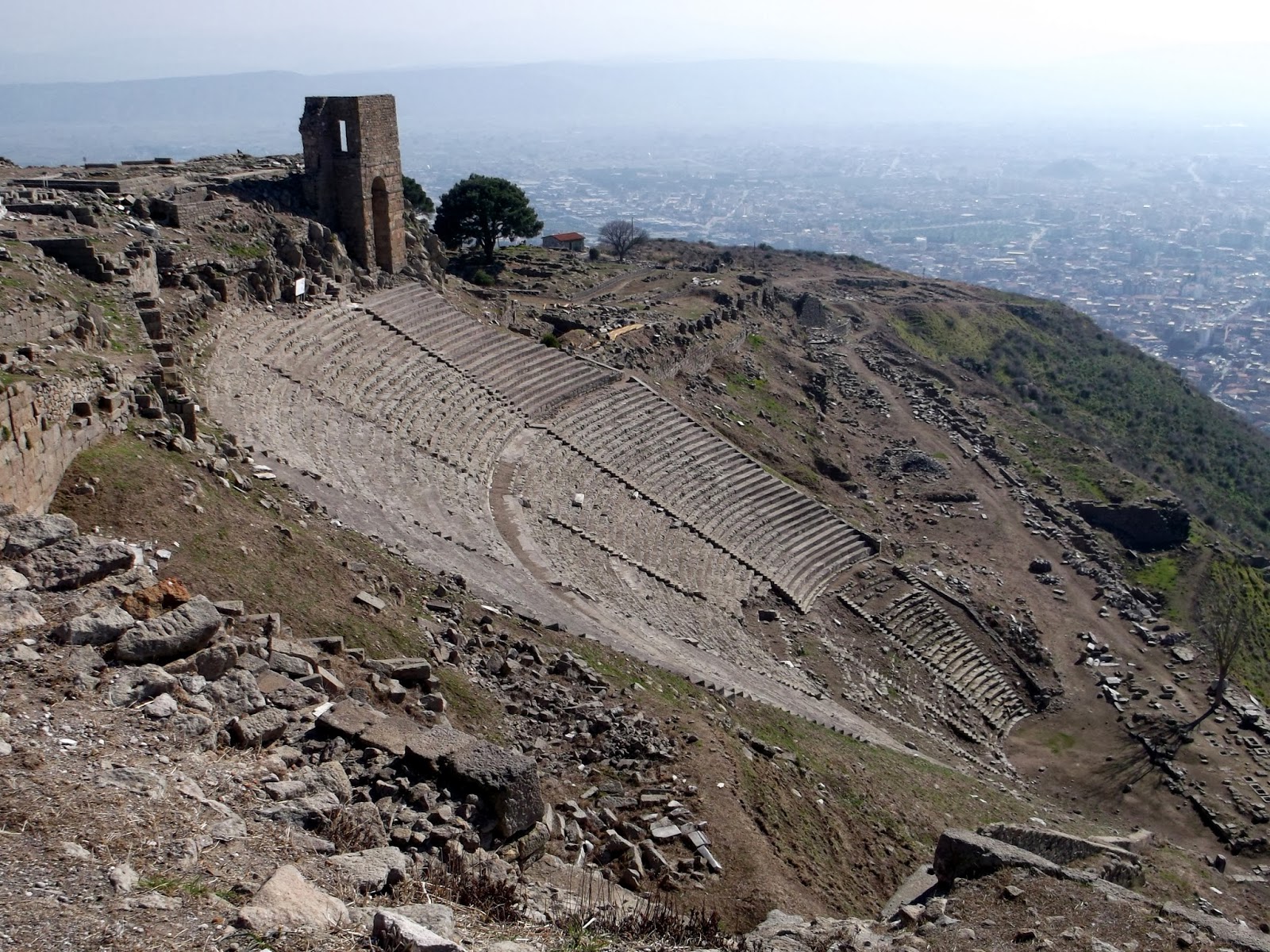Merhaba!
Oto
nadszedł czas, by napisać o jednych z najpiękniejszych przykładów
architektury na świecie, o meczetach! W Stambule znajduje się
prawie 3000 meczetów - więcej niż w całym Iranie!
Najpiękniejsze
i najbardziej okazałe meczety pochodzą z czasów Imperium
Osmańskiego, ale nie tylko takie goszczą w panoramie Stambułu.
Pierwszą
grupą są byłe świątynie bizantyjskie, które przemieniono
w meczety. Najbardziej znana jest oczywiście Hagia Sophia
(Ayasofya) - obecnie muzeum. Podobnie Muzeum Chora (Kariye
Müzesi),
które niegdyś było kościołem bizantyjskim, następnie meczetem,
a teraz zapierającym dech w piersiach muzeum pełnym mozaik i
fresków. Obok mojego uniwersytetu można także podziwiać meczet
Kalenderhane, także niegdysiejszy kościół obrządku
wschodniego, który przez Turków Osmańskich został przemieniony w
muzułmańską świątynię. Do niesamowitych zabytków należy także
Mała Hagia Sophia (Küçük
Ayasofya) – w środku przepiękny meczet o
charakterystycznej bizantyjskiej bryle z zewnątrz.
Większość
z tych świątyń została przemianowana na meczety po podboju
Konstantynopola przez Turków Osmańskich w 1453 roku. W
przeciwieństwie do Krzyżowców, Turcy nigdy nie niszczyli pięknie
zdobionych kościołów a jedynie zakrywali obrazy i freski za pomocą
tynku. Dzięki temu teraz mamy szansę podziwiać sztukę Bizancjum
cierpliwie odrestaurowywaną przez konserwatorów.
Drugą
grupą są nieco odmienne meczety osmańskie. Wyższe, większe
i smuklejsze są także okazałe. Jest ich zbyt wiele, by wszystkie
opisać. Dla mnie najbardziej wyjątkowym jest Błękitny Meczet
(Sultanahmet), najbardziej turystyczny, ale naprawdę
zapierający dech w piersiach. Jego unikatowość wynika z sześciu
towarzyszących mu minaretów. Legenda głosi, ze Sułtan Ahmet I
chciał, by były one altın
– złote, ale budowniczy źle zrozumieli polecenie i wybudowali ich
altı –
sześć. Ponadto do moich ulubionych należy Nowy Meczet (Yeni
Camii) i Meczet Rüstema
Paszy. Te dwa zlokalizowane są w dystrykcie Eminönü.
Nowy Meczet wybudowany w latach 1660-1665 jest jednym z najbardziej
majestatycznych i dominuje nad całym Eminönü.
Z kolei Meczet Rüstema
Paszy jest dużo mniejszy i schowany w alejach Bazaru Egipskiego.
Jest on jednak unikatowy – cudowne ceramiki z Izniku przyspieszają
bicie serca.
Zachęcam
Was także do odkrycia piękna mniej znanych meczetów Stambułu. Za
kwartałem Fatih można odnaleźć Meczet Mihrimah Sultan w
Edirnekapı.
Był on zaprojektowany dla ukochanej córki Sulejmana Wspaniałego. W
starej części miasta możecie także podziwiać Meczet Şehzade
oraz Meczet Fatih, gdzie pochowany jest Mehmet Zdobywca (Fatih
Sultan Mehmet). Nie zapomnijcie o bajkowym Meczecie Sulejmana,
gdzie z kolei spoczywa Sulejman Wspaniały wraz ze swoją sprytną
żoną Hurrem Sultan (znaną nam jako Roksolana). Stara część
Stambułu nazwana Eyüp
skrywa w sobie ogromny kompleks Meczetu Eyüpa
Sultana – bardzo ważny dla muzułmanów z racji spoczywającego
tam Abu Ayyuba al-Ansariego, przyjaciela Proroka Mahometa.
Wiele
pięknych meczetów znajduje się także w nowej części
europejskiego Stambułu. Do moich ulubionych należy Meczet Kılıç
Alego Paszy z XVI wieku w Tophane i Meczet Dolmabahçe
niedaleko pałacu o tej samej nazwie w dzielnicy Kabataş. Ten drugi
to malutki, ale cudownie zdobiony meczet, pełen kolorów, ale także
pozwalający wyciszyć się i uciec od gwaru miasta. Nie można
pominąć Meczetu Hüseyna Aği na alei Istiklal – jest on
wyjątkowy ze względu na śliczne witraże.
Azjatycka
część Stambułu może także pochwalić się znakomitymi
meczetami. Główna bohaterka książki Ahmeta Hamdiego Tanpınara
Spokojny umysł mówi nawet, że Üsküdar
to prawdziwy sułtanat kobiet. I nie myli się – niegdyś
traktowany po macoszemu Üsküdar
jest domem dla dwóch wspaniałych meczetów: Meczetu Yeni Valide,
wybudowanego dla matki Sułtana Ahmeta III Emetullah Rabii Gulnus
oraz Meczetu Mihrimah Sultan, zaprojektowanego dla tej samej
córki Sulejmana Wspaniałego, której meczet znajduje się w
Edirnekapı,
a która została żoną Rüstema
Paszy. Zagłębiając się w Üsküdar
możecie także odnaleźć Meczet Atik Valide podarowany żonie
Selima II Pijaka oraz Meczet Çinili,
wybudowany dla Kösem –
matki Murata IV.
Meczety
Stambułu są naprawdę okazałe i za każdym kryje się jakaś
historia. Nie jest łatwo znaleźć tu nowoczesny meczet w ankarskim
stylu. Wiele z najważniejszych zostało wybudowanych przez
najznamienitszego architekta Imperium - Mimara Sinana (Sinana
Architekta). Zbudował on około 400 z nich! Jego pierwszym dziełem
był Meczet Şehzade, ale
najsłynniejsze to Meczet Sulejmana, Meczet Kılıç
Alego Paszy, Meczet Mihrimah Sultan oraz Meczet Rüstema
Paszy. Jeśli zobaczycie meczet w Stambule, jest duża szansa, że
wybudował go właśnie Sinan.
Jest
wiele meczetów, o których nie napisałam, i wiele wiele więcej,
których jeszcze nie zwiedziłam. Najlepiej mieć oczy szeroko
otwarte – nigdy nie wiadomo, kiedy możemy znaleźć prawdziwy
skarb w zakamarkach Stambułu :) Teraz zapraszam Was na prawdziwą
ucztę dla oka – oto zdjęcia stambulskich meczetów!
*
Merhaba!
And
finally it's time to write something about mosques – one of the
most beautiful architectural examples in the world! Istanbul has
almost 3000 mosques, which is more than in the whole Iran!
The
most beautiful and magnificent mosques are those from the Ottoman
Empire period, but there are also many many others.
The
first group is ex-Byzantine domes, which were converted into
mosques. The best known is of course Hagia Sophia (Ayasofya)
- nowadays a museum. Similarly, the Chora Museum (Kariye
Müzesi)
used to be a Byzantine church, then a mosque and now it is a
breathtaking museum with enormous frescoes and mosaics. Close to my
university, you can admire the Kalenderhane Mosque, also an
Eastern Orthodox Church which became a mosque during the Ottoman
reign. Last but not least is Little Hagia Sophia (Küçük
Ayasofya) – a beautiful mosque on the inside with a
typically Byzantine shape from the outside.
Most
of them were converted by Ottomans after conquering Constantinople in
1453. Unlike the Crusaders, they never destroyed the beautifully
decorated churches and just covered the paintings with plaster. That
is why nowadays we can admire all the Byzantine works of art
patiently restored by conservators.
The
second group is Ottoman Mosques – they are slightly
different. Higher, bigger and slimmer, they are also magnificent.
There are too many of them to mention. For me, the most exceptional
will always be the Blue Mosque (Sultanahmet) – the
most touristic, but a breathtaking one. It is important because it
has six minarets. The legend says that Sultan Ahmet I wanted them to
be altın
- golden, but the builders misunderstood and built altı
- six of them. Two of my beloved are also the New Mosque
(Yeni Camii) and Rüstem
Pasha Mosque. Those two are located in the Eminönü
district. The New Mosque, built in the years 1660-1665, is one of the
most majestic and dominates the whole Eminönü
area. Rüstem
Pasha Mosque, on the other hand, is way smaller and hidden within the
Spice Bazaar. It is exceptional, though – its Iznik ceramics make
your heart beat faster.
I
encourage you to explore the beauty of less known mosques in the old
area, for example Mihrimah Sultan Mosque in Edirnekapı.
It was constructed for the beloved daughter of Suleiman the
Magnificent. In the old part of Istanbul you can also admire the
Şehzade Mosque
and Fatih Mosque, in which Mehmet the Conqueror (Fatih
Sultan Mehmet) is buried. Do not forget one of the most marvelous
of all mosques – Süleymaniye
Mosque, where Suleiman the Magnificent and his smart wife Hürrem
Sultan (known as Roxolana) are buried. An old part of Istanbul called
Eyüp
hides also the huge complex of Eyüp
Sultan Mosque – very important for all Muslims as Abu Ayyub
al-Ansari, the friend of Prophet Muhammad, is buried there.
There
are also beautiful mosques in the new part of European Istanbul. My
favourites are Kılıç
Ali Pasha Mosque from the 16th century in Tophane, and
the Dolmabahçe
Mosque near the Dolmabahçe
Palace in Kabataş. The
second one is a small yet marvellously decorated mosque, full of
colours, still very peaceful. The mosque which also should not be
omitted is the recently renovated Hüseyn
Ağa Mosque
on Istiklal Avenue – it is exceptional mostly because of beautiful
stained glass windows.
The
Asian side of Istanbul is glorious, too. The main heroine of Ahmet
Hamdi Tanpınar
book Huzur even says that Üsküdar
is the true sultanate of women. She is not wrong at all –
previously treated as a less important part, Üsküdar
is the house of two great mosques: Yeni Valide Mosque, dedicated
to the mother of Sultan Ahmet III Emetullah Rabia Gulnuş
and Mihrimah Sultan Mosque, built for the very same daughter
of Suleiman the Magnificent and the wife of Rüstem
Pasha. Deeper in Üsküdar
you can also find the Atik Valide Mosque, dedicated to the
wife of Selim II Mest, and the Çinili
Mosque built for Kösem
– the mother of Murat IV.
Istanbul
mosques are truly gorgeous and there is a history behind every one of
them. It is not that easy to find a modern one Ankara-like mosque.
Many of the most important mosques are designed by the greatest
architect of the whole Empire – Mimar Sinan (Sinan the Architect).
He created around 400 of them! His first work was Şehzade
Mosque, but his most famous were the Süleymaniye
Mosque, Kılıç
Ali Pasha Mosque, Mihrimah Sultan Mosque or Rüstem
Pasha Mosque. If you see the mosque in Istanbul, there is a huge
probability the work of Sinan was involved.
There
are many many mosques which I haven't written about, and way more I
haven't seen. The best option is to keep our eyes open – you never
know when you can find a real treasure on the streets of Istanbul :)
I now invite you to a real feast for the eyes – the photos of
Istanbul mosques!
 |
| Kariye |
 |
| Kariye |
 |
| Ayasofya |
 |
| Ayasofya |
 |
| Sultanahmet - Blue Mosque, fot. Zofia Olender |
 |
| Sultan Ahmet - Blue Mosque |
 |
| Sultanahmet - Blue Mosque, fot. Zofia Olender |
 |
| Mihrimah Sultan |
 |
| Huseyn Aga |
 |
| Kompleks Eyup Sultan / Eyup Sultan Complex |
 |
| Eyup Sultan, fot. Zofia Olender |
 |
| Dolmabahce |
 |
| Dolmabahce, fot. Zofia Olender |
 |
| Suleymaniye, fot. Zofia Olender |
 |
Suleymaniye
 |
| Suleymaniye, fot. Zofia Olender |
|
 |
| Yeni Camii - New Mosque |
 |
| Yeni Camii - New Mosque |
 |
| Yeni Camii - New Mosque, fot. Zofia Olender |
 |
| Ceramika w Rustem Pasza / Ceramics of Rustem Pasha |
 |
| Yeni Valide, fot. Zofia Olender |
 |
| Sehzadebaşı, fot. Zofia Olender |
 |
| Minbar - kazalnica w meczecie Aksaray / Minbar - pulpit in Aksaray Mosque, fot. Zofia Olender |
 |
| Fatih, fot. Zofia Olender |
 |
| Fatih, fot. Zofia Olender |
 |
| Kılıç Alı Paşa, fot. Zofia Olender |
 |
Ja w Rustem Pasza / Me in Rustem Pasha, fot. Zofia Olender
Foto: Huzun
Korekta: Agata Ostrowska
|

















































